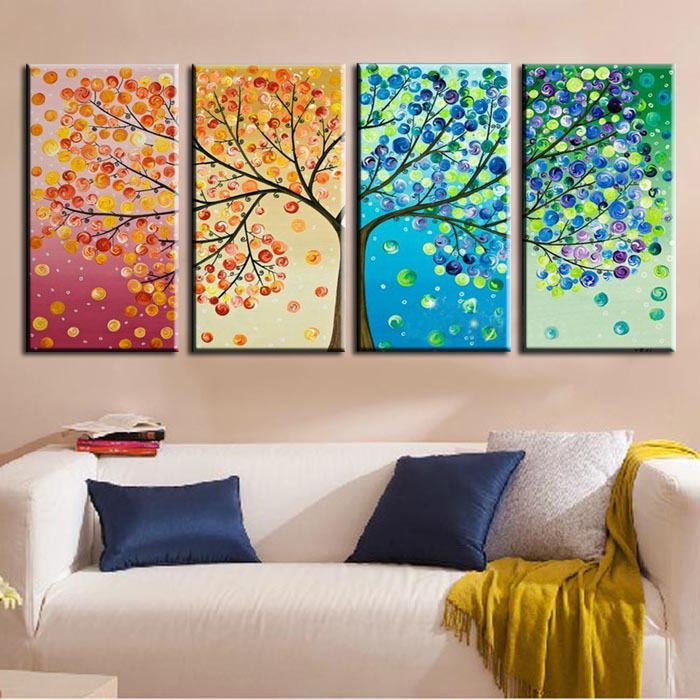The living room is the environment that will blend the people in your life into your home’s occasions. It is the most challenging room to furnish because it must be versatile, comfortable, and entertaining. Guests, family members, friends, this room will be the showcase of your home for all of them. This makes the design of the living room especially important. The colors and designs you choose will have subtle effects on the psychology of the residents in the area, resulting in small changes in the interactions that take place there. In a social center like this, you don’t want that influence to be negative. One way to control this is to understand the psychological effects of color on the people in a space.
/stylish-and-modern-sunny-bedroom-interior-with-small-wooden-night-table---garden-in-a-jar--white-bedding--colours-pilows-and-blanket--space-with-blue-walls-and-brown-wooden-parquet--1093508294-ab1b336e85ef481c8e8ce63640782cf0.jpg)
Color is what surrounds us; it makes up our environment. Everywhere we look, there is color, and this affects our minds. Specific colors have positive effects. Yellow is a happy color, while gray is considered gloomy. These effects change as the hue changes, and of course, other factors can change them. Too much yellow is even irritating to the eyes. Psychologists have studied color and its effects for years, and they have found many generalities that affect most Americans in similar ways. However, it is essential to note that these ideas are not universal, and you should always follow your taste when decorating a room.
Before you begin, you must decide what you want to evoke. Do you want to make it a quiet, peaceful room or a place for wild parties? Do you want the room to have a joyful feel, or are you looking for a spot of serenity? Once you know what you want, you can paint according to the numbers, always choosing the shade that evokes the most desired effect in you.
The most popular color in America is blue. This color gives a sense of calm and is often associated with the ocean. The color blue can make a room look more prominent, and it stimulates evoked emotional responses. Lighter blue is more popular and will make a room seem more open than a darker navy..

The next most popular color in America is green. This is the color of nature and is almost always associated with growth. Using green is slightly more stimulating than blue but still produces a sense of mental calm. Green is the easiest color for the eye and is suitable for vision. Avoid sickly greens and use nature as your guide to mix and match colors in a green-themed room.
Earth tones give a room a densely grounded feel and can promote a sense of intimacy. They are rustic natural colors that come across as warm and straightforward. Soft tans and browns are the colors of family and give your living room that feeling of home. Plus, they don’t show dirt. Greens can be matched with shades of brown to create a sense of nature and the outdoors inside.
Red and yellow are colors that are best not used in large quantities. Too much yellow can cause eye irritation and an uncomfortable feeling. Red, although very stimulating, is also a very aggressive color. Using too much red can easily lead to fighting. To avoid conflict, use red and yellow only as accessories, and only if they match the room’s primary color.
It is almost impossible to get angry in a pink room. In light tones and small doses, this color softens people’s personalities. But if you paint the whole room wild pink, you may be irritated by the brightness. Instead, use pink in an understated way. Add pink accessories or a few pink decorations. If you want to paint a room pink, choose a light color that matches earth tones. Be careful, however; the more pink is used, the more people become lazy and unmotivated.
Decide what kind of environment you want to evoke, and then decide on the colors to help you get there. Make sure the colors you use match. Make sure there is a balance between the different extremes, and refer to yourself often. Only you know if the harmony of the room helps bring balance to your home. You are your own best resource.